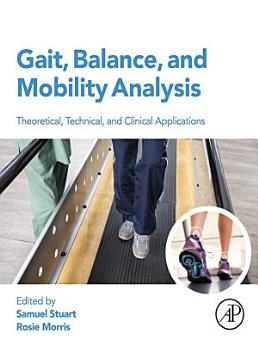Gait, Balance, and Mobility Analysis: Theoretical, Technical, and Clinical Applications
About this ebook
About the author
Samuel Stuart is an academic Associate Professor, a clinical physiotherapist and currently an Associate Director within the pharmaceutical industry where he leads a digital biomarker laboratory, which is a multidisciplinary group of engineers and clinicians. His work focuses on the development of novel digital clinical assessment and rehabilitation tools for clinical trials and healthcare settings, which include the application of technologies to examine gait, balance and mobility in clinical populations. He has published extensively in world leading journals focusing on a broad range of activities, such as real-world data analytics, algorithms development for wearable devices. He is also an Associate Editor at PLoS One and Frontiers of Neurology, and is on the editorial board for Gait & Posture, Sensors and Frontiers in Rehabilitation. He has guest edited several special issues for these journals, as well as for Physiological Measurement and Journal of Neuro-Engineering and Rehabilitation. Dr. Stuart has also been an Editor for several previous textbooks on Digital Health and Eye-tracking.
Rosie Morris is an Assistant Professor, a physiotherapist and currently the Director of the Physiotherapy innovation Laboratory (www.pi-lab.co.uk) at Northumbria University, which is a multi-disciplinary lab of clinicians, scientists, engineers and data scientists. Her work focuses on the role that cognition plays in gait, balance and mobility impairment in clinical populations, particularly neurological diseases. Work includes UK and US projects across multiple sites to examine mobility function in clinical and home-based settings in a variety of large clinical cohorts. Dr. Morris has published extensively within world-class international journals in her field, which has led her to be an Associate Editor and Guest Editor for several journals, such as Frontiers of Neurology and Sensors.




